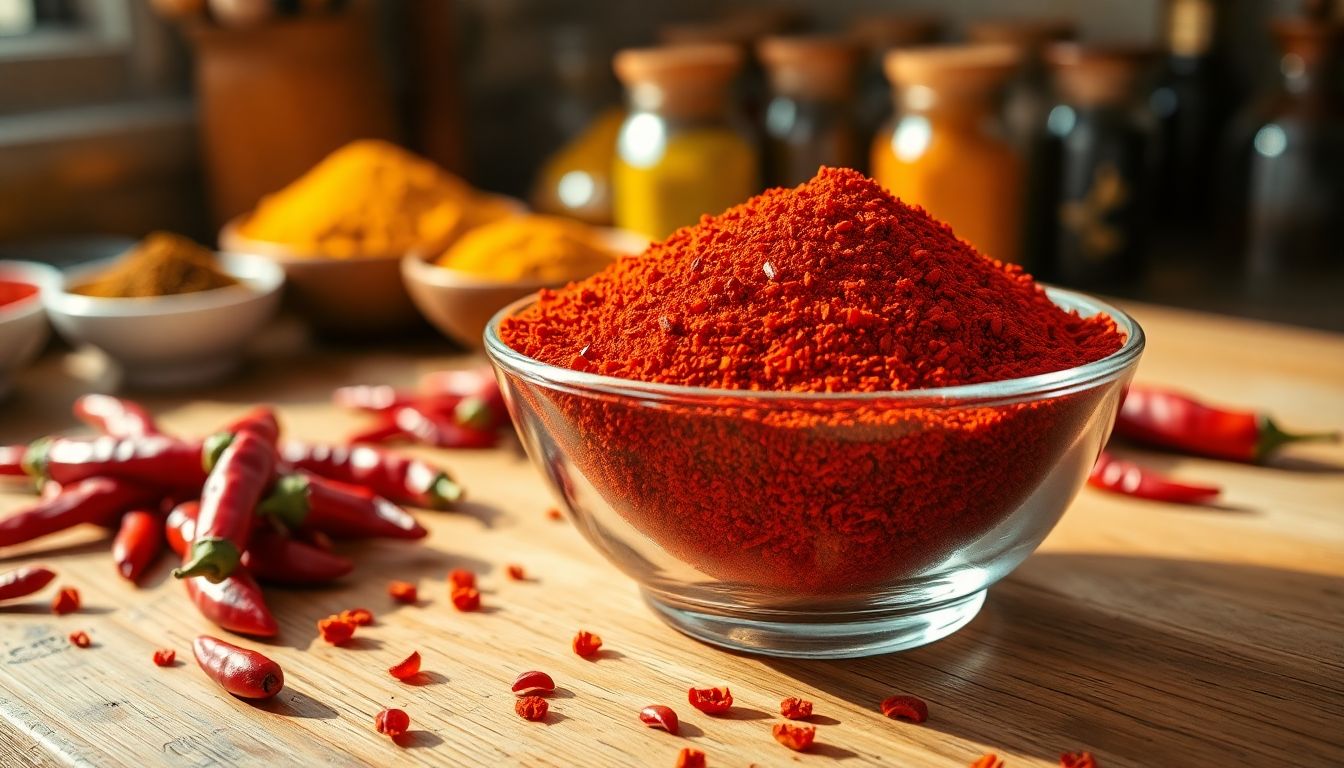
Red Chilli Powder: The Ultimate Guide to Its Uses, Benefits, and Cultural Significance
Introduction
Red chili powder is a favorite ingredient in kitchens worldwide. From fiery Indian curries to zesty Mexican salsas, it brings flavor and heat to dishes. No wonder it’s a staple in many homes and restaurants. But how much do we really know about this spice? Understanding its types, health perks, and role in different cuisines can boost your cooking game. This guide shares everything you need to know about red chili powder — from its history to tips on choosing the best quality.
What is Red Chilli Powder? An Overview
Definition and Composition
Red chili powder is made from dried red chilies ground into fine powder. The main ingredient is, of course, dried red chili peppers. These peppers contain a compound called capsaicin, which gives the spice its heat. Different varieties of dried chilies are used, such as cayenne, cayenne, Kashmiri, and chili de Arbol.
Varieties of Red Chilli Powder
You’ll find many types of red chili powder. Some are sold commercially, while others are homemade. Regional differences also influence the flavor:
- Indian chili powder is usually bright red and spicy.
- Mexican chili powder often includes smoky flavors.
- Smoked chili powder is made from chillies smoked over wood, adding a deep aroma.
- Sweet chili powder is milder and not very hot.
Nutritional Profile
This spice isn’t just about heat. It packs nutrients like vitamins A and C. Capsaicin, the fiery compound, is also a powerful antioxidant. Eating chili might give your immune system a boost and improve circulation. However, eating too much can upset sensitive stomachs.
Culinary Uses and Recipes Featuring Red Chilli Powder
Popular Dishes Around the World
You can spot red chili powder in many classic dishes:
- Indian curries and spicy masalas
- Mexican salsas and chili con carne
- South Asian street foods like pani puri and chatpati snacks
Cooking Tips and Best Practices
Adding chili powder can seem simple but getting it just right takes some tips:
- Use it during the cooking process to build flavor.
- Adjust amount based on heat preference.
- In some recipes, fresh chilies give a different, fresher heat.
- Balance chili heat with acidity or sweetness for best results.
Actionable Recipe Ideas
Here are quick ideas to make your own:
- Mix chili, cumin, and salt for a homemade spice blend.
- Use chili powder in marinades for grilled meats.
- Adjust spice levels: add less for mild heat or more for a fiery kick.
Health Benefits and Nutritional Insights
Antioxidant and Anti-inflammatory Properties
Capsaicin in chili fights inflammation and free radicals. It helps reduce swelling and promotes overall health. Regular intake might even lower the risk of chronic diseases.
Weight Management and Metabolism Boost
Some studies suggest eating chili boosts metabolism. It can help burn calories faster and curb your appetite. A pinch of chili in your meals might be a simple way to support weight loss goals.
Pain Relief and Cardiovascular Health
Capsaicin has pain-relieving qualities. It’s used in patches for muscle pain and nerve issues. Plus, research shows chili could improve heart health by lowering blood pressure and cholesterol.
Safety and Recommended Intake
While chili is good for you, moderation is key. Too much might cause stomach discomfort or heartburn. Your best bet is to listen to your body and start with small amounts.
Selecting and Storing Red Chilli Powder
How to Choose Quality Red Chilli Powder
Look for bright red color, fresh smell, and no clumps. High-quality chili powder should be vibrant and fragrant. Check the expiration date and avoid powders that look dull or stale.
Proper Storage Tips
Store in airtight jars away from direct sunlight. Keep away from moisture to prevent mold. Proper storage preserves flavor and potency for months.
Tips for Making Homemade Red Chilli Powder
Making your own can be simple:
- Choose fresh, ripe chilies.
- Dry them in the sun or oven.
- Grind into a fine powder.
- Store in a clean, dry jar. Freshly made chili powder always tastes better and is more potent.
Cultural Significance and Historical Context
Red Chilli Powder in Traditional Cuisines
In India, it’s vital for curries and pickles. Mexican dishes like enchiladas rely heavily on chili powder. Thai food uses it in spicy pastes and soups. Each culture has its unique way of using and valuing this spice.
Historical Origins and Trade
Chili peppers originated in Central and South America. Explorers brought them to Europe and Asia in the 15th century. Soon, chili became popular worldwide. It’s now a symbol of fiery flavors crossing borders.
Folklore and Symbolism
In some cultures, chili symbolizes protection or passion. Some believe it wards off evil spirits. Over time, chili’s fiery spirit blends with tradition and folklore.
Conclusion
Red chili powder isn’t just a spice; it’s a history-rich ingredient loaded with benefits. It elevates the flavor of dishes and offers health perks like antioxidants and pain relief. Choosing the right quality and storing it properly will keep its flavor strong. Whether you’re cooking a classic curry or adding heat to snacks, chili powder adds excitement to your meals. Keep experimenting, and don’t be afraid to spice things up a bit. Your taste buds — and your health — will thank you.
